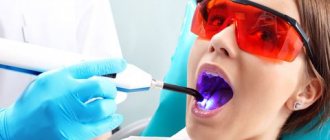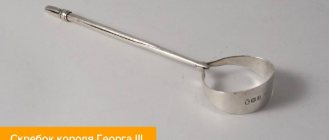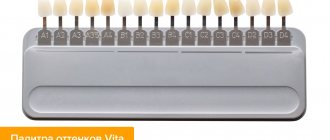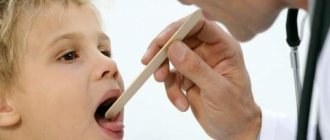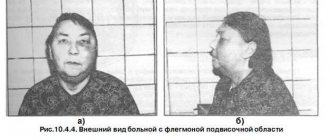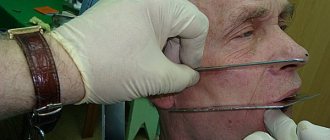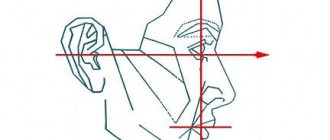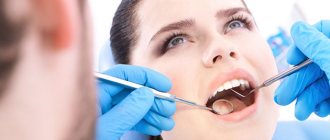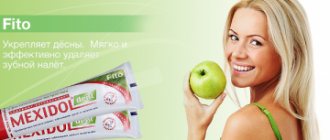Comprehensive professional oral hygiene
Occupational hygiene is carried out by a dental hygienist, who must have the appropriate license to provide this specialized service. On the Internet, many patients ask the same question: “Why do we need professional oral hygiene?” If we brush our teeth twice a day, why should we go to the doctor for it and pay extra money? The thing is that a toothbrush and toothpaste do not remove all deposits: even with an ideal cleaning technique, hard-to-reach areas remain where soft plaque accumulates. Under the influence of calcium salts, plaque turns into tartar, which is almost impossible to remove without special devices. Professional hygiene is especially important for people with braces and dentures.
What is included in professional teeth cleaning?
- Preventive examination of the oral cavity
- Tartar removal
- Cleaning teeth from plaque in hard-to-reach places
- Polishing tooth surfaces, veneers, crowns, etc.
- Fluoridation
Methods for detecting dental plaque
Supragingival mineralized dental deposits are detected during examination of the oral cavity as formations on any surface of a natural or artificial tooth above the gum margin from light yellow to black. When probed, they are hard, rough, tightly connected to the surface of the tooth. Intraoral video cameras can also be used for examination.
Subgingival dental deposits are determined by probing the root surface, as well as radiographically in the form of foci of shading of irregular shape with a density equal to the hard tissues of the tooth on the approximal surfaces of the neck and root of the tooth. Subgingival dental deposits can be located on any surface of the tooth root, usually in the form of dark, dense formations tightly attached to the root surface. When probing, the working part of the probe should be located parallel to the tooth surface and constantly be in contact with the surface being examined. Movements with the probe are made along the surface of the tooth below the edge of the gum without putting pressure on the instrument.
Thus, the lingual, vestibular (buccal), mesial and distal approximal surfaces are examined. With the correct technique, gum injury does not occur. Probing reveals all the features of the surface of the crown and root of the tooth: irregularities, density, the presence of carious cavities, overhanging edges of fillings, the presence and amount of dental plaque, sensitivity of the necks of the teeth, and also monitors the results of the work.
Among the methods for removing dental plaque, chemical and mechanical methods are known; among the mechanical methods, a distinction is made between manual (manual) and hardware.
Did you like the article? Share with friends
0
Similar articles
Next articles
- Chemical method of removing dental plaque
- Manual instruments for removing dental plaque
- Electric instruments for removing dental plaque
- Grinding and polishing the surface of teeth
- Etiology of periodontal diseases
Previous articles
- Ceramic veneers
- Hypertrophic gingivitis
- Ulcerative gingivitis
- Catarrhal gingivitis
- Erythema multiforme exudative
Professional teeth cleaning methods
The history of professional hygiene goes back decades, but previously deposits had to be removed manually using special scrapers, which could injure the enamel and surrounding tissues. Today, doctors and patients have a large selection of technologies and tools: the procedure has become fast, effective and as safe as possible. Modern clinics use several types of professional hygiene systems, which have their own advantages and disadvantages.
Professional oral hygiene Air Flow
Air Flow technology is a popular development by EMS, based on the sandblasting method. The desired effect is achieved thanks to a dense flow of compressed air, liquid and sodium bicarbonate particles (the so-called water-abrasive solution). A separate product, Air Flow Perio, is designed to clean periodontal pockets and polish the root surface.
The advantages of the technology include the comfort of the procedure, gentle effect on the enamel and good recovery properties. The main disadvantage is the inability to effectively remove tartar.
Professional oral hygiene with ultrasound
Removal of plaque and destruction of tartar occurs due to the mechanical action of ultrasonic waves and the cavitation effect, which is achieved using water (it is supplied to the tip of the device). Modern scalers with linear oscillatory movements are considered the most effective and safe: old devices with a circular oscillation of the tip can damage the enamel (especially in the hands of an inexperienced doctor). One of the innovative developments is the Vector ultrasonic device, which was created for effective cleaning of periodontal pockets, but many practicing dentists do not see any great advantages in it compared to a conventional ultrasonic scaler.
Laser cleaning
New technology in the field of professional hygiene. A diode dental laser breaks down tartar and evaporates all accumulated bacteria along with the liquid. In addition, laser radiation also has a whitening effect. The disadvantage of the technique is its high cost.
Occupational hygiene before and after Guided Biofilm Therapy
Conversation with Dr. Terentyev
— Do you agree with the thesis: “Prevention is better than cure”?
— In medicine, it is always better to prevent a disease than to treat its consequences. Treatment is both more expensive and more difficult.
— When to carry out professional hygiene: before the start of treatment or after?
— Professional oral hygiene must be carried out before treatment, because any of our interventions, both in the teeth and in the mucous membrane, should be carried out only on clean teeth and clean gums. We must remove the biofilm that is on our teeth. We must prepare the mucous membrane, remove all hard dental deposits before starting any work in the oral cavity.
— Does professional hygiene lighten teeth?
— Yes, professional oral hygiene brightens teeth, but it does not whiten them. Some patients confuse whitening and professional oral hygiene.
Teeth are brightened after professional oral hygiene due to the fact that we remove all plaque - the most important is that which the patient cannot remove with a toothbrush. Sometimes the patient does not smoke, does not drink a lot of coffee or, say, red wine - in general, he does not even suspect that he has quite a lot of plaque on his teeth.
Plaque affects the color of teeth - they become darker. When we clean off all this biofilm, this plaque, the teeth become a shade lighter, some even two shades lighter.
— Can we say that professional hygiene is a new direction in dentistry?
— If we consider it from the point of view of commercial use and accessibility for patients, then most likely yes.
If we discuss when the direction appeared, it happened in the 1970s in America. Even then, “decaying capitalism” was doing all this. Naturally, everything was different than now, but it already existed.
Professional hygiene - easy prevention
We explain why it is better not to get sick, and not to be treated
— Is it possible to logically divide professional hygiene into stages?
— If we look at the old (three to five years ago) methods that were used in dentistry, then professional oral hygiene consisted of several stages.
First stage. We used ultrasonic devices to remove hard dental deposits: supragingival, subgingival - it doesn’t matter.
Secondly, we treated our teeth with brushes, rubber bands, and pastes to remove plaque.
Then we polished - again, with brushes, rubber bands, paste.
Another stage was fluoridation of teeth.
It turns out that it can be divided into approximately four stages.
Professional oral hygiene today - with the help of modern devices (we are now talking about Prophylaxis Master), which recently appeared on the dental market - everything is different there. The GBT system is already working, and this protocol was developed in Switzerland, and I would say it is radically different from what we are all used to.
— That is, the stages change somehow with the advent of new equipment?
- Yes, now cleaning is radically different. We use erythritol based powder developed by EMS. This is a powder that has no analogues. Its particles are only 14 microns.
And we can use this powder both above and below the gum, that is, we even remove some mineralized areas of plaque under the gum.
In addition, we already reduce ultrasonic cleaning to a minimum. With this powder we can practically remove most dental plaque. We refine those areas that the powder still cannot cope with using ultrasound.
I would call it a trendy smart ultrasound, because now the device understands where there is dental plaque and where there is not. So, we set the ultrasound power to minimum, and when the device realizes that we have a stone on our tooth, the power automatically increases, the stone is removed, and if we move further along the root of the tooth and the stone is no longer there, the power instantly drops. The message between the handpiece and the device is about 200 messages per second. It is so fast that a person does not have time to react, but the device, it turns out, reacts.
What does minimal use of ultrasound mean?
This is the minimum of all kinds of pain.
And again, we also use powder at the end. And the fine powder allows us to no longer polish anything - no brushes, no pastes, no rubber bands are needed.
It turns out that we, in principle, now only have 2 stages left. The stage of fluoridation of enamel, of course, is also present, but the system is much simpler.
— What is the Guided Biofilm Therapy protocol?
— Guided Biofilm Therapy (GBT, GBT) is a new technique for professional oral hygiene.
If its name is literally translated, it is “biofilm management.”
Biofilm is what microorganisms build that live on our teeth.
EMS has developed this technology - it consists of eight steps, and they are fundamentally different from what was before, from the approach that was in professional oral hygiene before.
The Guided Biofilm Therapy protocol gives us eight steps for proper, regulated biofilm so we can manage it.
The first is diagnostics when the patient comes to see us. We diagnose him with any carious lesions, plaque, stones, and so on. Next we apply the indication.
Second. Indication - what is it? There is a special substance that colors our biofilm, consisting of microorganisms. Because patients who don’t smoke, don’t drink a lot of coffee, don’t drink dark teas—their teeth are naturally colored. They just feel that the teeth are a little rougher and so on. When we apply the indication, we see how wrong this is, how much we do not clean our teeth. The teeth are painted a fairly bright purple color, and we demonstrate that the water does not clean the teeth; the plaque remains.
Where the patient uses a toothbrush well, this plaque is almost minimal, and where it is not sufficient, the teeth become purple.
Even a dentist cannot always determine the presence of this biofilm by eye, much less a patient.
Third is motivation. We always tell patients that they need to spend time on professional oral hygiene, that they need to use good brushes and pastes, because no matter how ideally we brush our patients’ teeth, no matter how ideally we carry out professional oral hygiene, no matter what ideal equipment we use no matter what they did - if we do not take care of our teeth ourselves, this protocol is violated. We take the car for maintenance, change tires, take care of it - the same thing here, so we also need to do something at home.
Accordingly, the fourth step is the operation of our new AirFlow device with erythritol-based powder, which contains a small particle, only 14 microns. We treat all teeth, everything under the gums, even pockets up to 4 mm that exist - we can go through all this with our AirFlow device. And, accordingly, the patient then sees in the mirror that the purple plaque that was on his teeth is gone. We removed all biofilm.
The fifth stage is PerioFlow. This is for patients who already have large pockets, namely more than 5 mm - these are quite serious periodontal diseases. We use a special tip, which is also on our new PerioFlow device - the same erythritol-based powder is poured into it, and it allows us to treat even these pockets, which we previously could not reach in any way, only periodontists with special devices.
The sixth stage is ultrasound itself. This is the latest development - piezoelectric ultrasound, which helps us remove hard dental deposits from under the gums at minimal power.
The seventh stage is control, which we, after completing the work, that is, we check everything that we have done so that we do not have dental plaque or stained biofilm anywhere, accordingly, we are already convinced that the patient is completely ready for the next stage, when we We apply fluoride mouth guards. After cleaning, we do deep fluoridation to saturate the enamel with all minerals and vitamins. Mandatory, eighth stage - return visit. We always schedule a follow-up visit for patients after six months to monitor our biofilm, to see how much more it has become and how much less it has become.
— What is so good about the new AirFlow Prophylaxis Master device, which is used to carry out professional hygiene today?
— This is a new device from the EMS company, it’s called AirFlow Prophylaxis. In my opinion, this company is one of the best in the world for prevention, and they directed all their work and actions specifically towards the prevention of diseases in dentistry.
This device has the first, most important advantage - it is an erythritol-based powder. This powder can be used by pregnant women, and when the patient has any ceramic restorations, veneers, which could not be done before.
This powder can be used by patients who have implants. This allows us to clean everything in these patients, but previously the structures were bypassed, so to speak, bypassing them, that is, we cleaned those places where they were not.
You can do all this on Prophylaxis Master. Why does this happen?
The powder consists of small particles, 14 microns, and previous powders had a particle of 40 microns. Almost twice as much.
Such large particles could damage both the ceramic structures and the mucous membrane, so we could not work under the gum.
The second huge advantage is smart ultrasound.
Two hundred messages per second between the tip and the device allow you to work at minimum power, and the device itself sets the power if it understands that there is a stone. Where there is no stone, the power drops, and it turns out that there is no damage to the teeth.
We have a completely new, innovative approach to professional oral hygiene and disease prevention, as new ultrasound systems and new powders have been developed.
When we clean with this powder, the patient does not need to be covered with any rags, as was the case before, when a person came out covered in white sand.
We had to inject patients who had high sensitivity with a large amount of anesthetic - this is also not done now, because this stream is so thin that all patients have the feeling that they simply washed something with water, only all the deposits were gone.
Therefore, I would say that now professional oral hygiene is divided into “before” and “after”.
— How and when did you decide to become a dentist?
“At birth, I saw a star falling and realized that I needed to be a dentist, help people.
But in fact, I practically entered the Forestry Academy, but it so happened that first I ended up in a dental college, and my first education was as a dental technician. That is, I am the person who makes all the structures for dentists.
In the early 2000s, I went to practice in Germany and saw what modern world dentistry is like. And after graduating from college with honors, I decided to enter the First St. Petersburg State Medical University. I. P. Pavlova - then it was much easier to enroll with honors.
There was only one exam to pass - in dentistry. That is, having seen real dentistry abroad, I realized that it would be the same here, and I really liked it all.
That's how I became a dentist.
Carrying out professional oral hygiene
- Primary cleaning of soft plaque using abrasive paste.
- Removing deposits using an ultrasonic scaler, laser or Air Flow method.
- Polishing the surface of the teeth with special brushes and strips (interdental strips) with an applied abrasive substance.
- Remineralization of enamel and application of whitening compounds. This is an additional item of professional cleaning, which is agreed upon with the patient in advance and, as a rule, is paid separately.
The complex of professional hygiene includes:
- Coating the teeth with a special indicator that determines the degree of contamination of the teeth (this is done so that the patient can see for himself the places where he cleans poorly, and the dentist can remove plaque everywhere efficiently;
- Removing tartar using an EMS ultrasonic scaler.
- Removing dental plaque using Clinpro (3M company) or KavoProfypearls cleaning technology (a special device that supplies air, water, and tiny abrasive powder particles under pressure).
- Polishing the surface using individual brushes and polishing pastes.
- Coating of teeth with protective and preventive varnish, remiralization.
On average, the procedure lasts 40-60 minutes (depending on the degree of contamination of the teeth).
Professional oral hygiene during pregnancy and children
It is believed that the procedure of brushing teeth by a hygienist is not recommended for pregnant women, but there are some nuances here. Most contraindications are associated with ultrasound, which, according to some experts, can affect the mother's metabolic process and the development of the fetus. On the other hand, a healthy oral cavity has a beneficial effect on the entire body. Professional cleaning may be recommended during pregnancy, given the fact that at this time teeth become especially vulnerable to bacteria. During pregnancy, the gentle Air Flow technique is most often used, which does not involve exposure to ultrasound.
Oral hygiene in children also has its own characteristics. Ultrasonic cleaning is not recommended for children under 15 years of age, as ultrasound can damage fragile tooth enamel and disrupt tooth growth. At the same time, you cannot completely refuse to brush your teeth in the clinic: in childhood, professional hygiene is especially important, since it lays the foundations of dental culture and affects the quality of life of an adult.
Recommendations after professional oral hygiene
After professional oral hygiene, all rules and recommendations are aimed at preserving the results of the procedure. In the first few hours, it is forbidden to drink colored drinks and foods (wine, tea, coffee, beets, citrus fruits, etc.), as well as smoke cigarettes. In the first two days, it is not recommended to eat too rough and hard food. High-quality oral care at home will help prolong the results of professional hygiene: many experts advise purchasing a good ultrasonic brush or irrigator. These devices can effectively combat the accumulation of plaque in hard-to-reach places.
A unique, multifunctional device that combines an electric sonic toothbrush, an irrigator and dental floss. The components and the device itself are stored in a convenient plastic container, which is ideal for traveling or storing in a small bathroom.
How often should you do professional dental hygiene?
The recommended interval between professional teeth cleanings in the clinic is six months. However, this period may vary. For example, if you have braces, you may need to visit your hygienist more frequently because plaque builds up faster. At the same time, ultrasonic cleaning in people with orthodontic structures is only possible in the gum area: the braces area is usually treated using Air flow. The frequency of professional hygiene is also influenced by the individual characteristics of the structure of the dental system, as well as the quality of home hygiene. For gum diseases, cleaning dental plaque is one of the first stages of treatment, but this procedure cannot be carried out too often, especially during periods of exacerbation of gingivitis and periodontitis.
The opposite effect is tooth sensitivity and bleeding gums.
If you read reviews about professional hygienic teeth cleaning on the Internet, you can easily see that not everyone benefits from it. Increased sensitivity of teeth, cracked enamel, inflamed gums and fallen fillings - this is an incomplete list of complications that may occur. But the reason for their occurrence lies not in the procedure itself, but in the unprofessionalism of the doctors who prescribe and carry it out. Occupational hygiene is not a panacea; it cannot be done for everyone without prior consultation with a specialist. For each patient, its frequency and methodology should be purely individual. Therefore, it is better to try to find a good dentist and hygienist than to completely refuse professional hygiene.
Innovative procedure ClinproTM (ClinPro)
Dentistry clinic Prosmail.RU presents the innovative procedure ClinproTM (ClinPro) from the leader in the dental industry, 3M ESPE. ClinproTM (KlinPro) is a minimally invasive procedure for professional hygiene and prevention.
The ClinproTM procedure is especially effective for the following patients:
- Orthodontic patients - when it is necessary to carry out professional hygiene quite often (once every 3 months)
- Periodontal patients with pocket depths up to 5 mm
- Patients with implants
- Before filling with composite restorations in one visit
- Before teeth whitening procedure in one visit
- Patients with hypersensitivity, for example, those who have undergone professional whitening procedures
A special feature of the ClinproTM procedure is its gentle effect on tooth tissue. ClinproTM materials allow you to select an individual care system for each clinical case, ensuring the best result. The complex uses an innovative remineralizing fluoride varnish, which has an aesthetic white color and is highly effective against generalized tooth sensitivity. The technique allows you to relieve local hypersensitivity.
